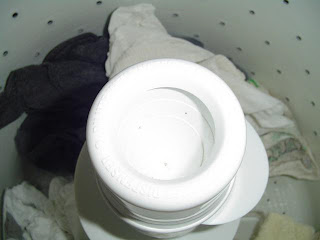Allergy Concerns Over Green Washing Cycles
by Chris Marshall
Scientists have raised concerns that environmentally friendly washing cycles are not all "friendly" for allergy sufferers. Korean researchers have found that low temperature washing cycles, "green" energy-efficient 30 or 40 degree celsius washes, only killed 6% of house dust mites compared with 100% at 60 degrees.
Washing clothes at 40 degrees compared with 60 degrees uses a third less energy, and many environmental groups, including Friends of the Earth, recommend even lower temperature washes, whilst switching from 40 to 30 degree washes saves a further 40% in energy costs. Many detergent manufacturers are also encouraging their customers to wash at lower temperatures by saying that their products still work just as well as at a higher temperature.
However, this recent Korean research suggests this may not be the case. At both 30 and 40 degree washes, using detergent and "enzymes" designed to improve washing at low temperatures, only between 6.2% and 6.5% of house dust mites were destroyed. In addition, the low temperature washes fared badly against other allergens. Cotton sheets contaminated with dog dander -- saliva and skin cells that are a common allergen in dog-owning homes -- were also washed at 30, 40 and 60 degrees. At the two lower temperatures, more than 40% of the dander remained when the sheet was re-tested. At 60 degrees, just 12% remained.
For those who are just as concerned about the environment as their allergies, the researchers did find a way to still do their washing at lower temperatures without further affecting their health. They found that rinsing fabrics three or four times in cold water after washing at 30 degrees produced results comparable with a much hotter wash.
Lindsey McManus, from Allergy UK, agreed with the Korean study and said that allergy sufferers should use a 60 degree wash. She said: "Sheets and clothes should definitely be washed at 60 degrees or more, and regularly, to get rid of house dust mites and other allergens."
John Bailey, from leading detergent manufacturer Proctor and Gamble, said that it wasn't the mites themselves that were causing the allergic reaction, but their droppings. "House dust mite themselves pose no problems -- it's the protein contained in their fecal dropping that's the allergen. Under European wash conditions, like other protein allergens, this is easily removed. All effective detergents are successful in removing protein allergens in a 30 or 40 degree wash cycle."
The Allergy Website explores the issue of allergies discussing what causes them and how they can be treated. For more information please visit http://www.allergywebsite.co.uk.
Article Source: http://www.articles2k.com
I'm not sure what to do with the information in this article.
We are all concerned with conserving energy - doing what's best for our planet while at the same time, trying to cut back painfully high energy costs in our homes.
On the water temperature question, I'm going with the researchers rather than the soap manufacturers.
My question is -
wouldn't the temperature in the clothes dryer, assuming we use one, finish the job of removing the allergens?
Anybody?
Leave a comment with your thoughts...





